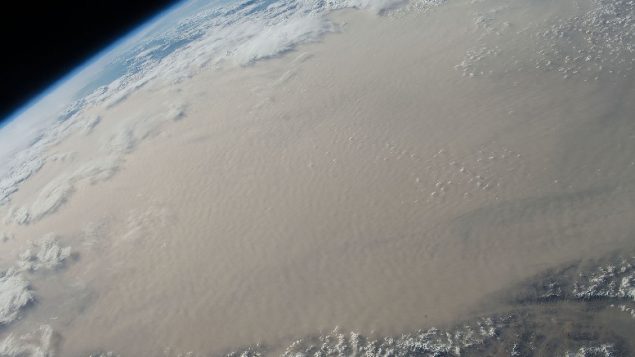Desert dust effect on a changing Arctic climate
A Canadian researcher has discovered what appears to be an aspect of Arctic temperatures that has not been noticed before.
That is, the effect of Asian desert dust on satellite temperature readings in the western Arctic.
It may be that because of the dust, Arctic satellite sea and ice surface temperature retrieval could be inaccurate
Ron Vincent (PhD) is a professor and researcher in the Department of Physics and Space Science at the Royal Military College, Kingston Ontario.
ListenProfessor Vincent’s findings were published in June in the journal Science Reports under the title, “The Effect of Arctic Dust on the Retrieval of Satellite Derived Sea and Ice Surface Temperatures” (open access HERE)

Ron Vincent (PhD) Professor, Royal Military College
He says that due to ice crystals in the Arctic atmosphere the algorithms for measuring sea surface temperatures by satellite in temperate areas do not work well in high latitudes.

Satellite image Arctic-standard visual (R Vincent-RMC)
He had developed an algorithm for satellite thermal readings in the high Arctic, but when he studied the western Arctic and compared findings against a temperate algorithm, the figures came out confusingly the opposite of what they should.
His studies showed sea surface temperatures were surprisingly colder than he expected and then realised that at times the satellite “spectral signature” of the Amundsen Gulf was similar to that of a desert. That’s when he discovered that dust, mostly from Asia, could be skewing estimates of Arctic surface temperatures, resulting in inaccurately cooler sea and ice surface temperatures in the presence of dust.
It seems that annually 6.5 million tonnes of dust is carried from Asian deserts across into the western Arctic.

The same view this time with infrared imaging on left, and thermal imaging on right showing effect of dust on readings (R Vincent-RMC)
He said because of the dust, the satellites which scientists use to calculate warming have been misreading the temperatures as the dust doesn’t emit reflect energy as well as water or ice. Thus satellites may be reading a colder temperature than is actually the case.

This image taken from the international space station on April 15 2015 shows the massive extent of a dust storm across the Gobi desert. The dust can be carried several km up into the atmosphere and travel all the way to the Canadian Arctic (Scott Kelly- NASA)
Also, dust in the clouds as the dust settles onto the ice and ocean, it reduces reflectivity (albedo) causing the surface to absorb more heat, melting ice more quickly.
Vincent notes that as climate changes, dryland and deserts are expanding which could increase the amount of dust deposited in the Arctic and potentially accelerate melting.
Additional information







For reasons beyond our control, and for an undetermined period of time, our comment section is now closed. However, our social networks remain open to your contributions.